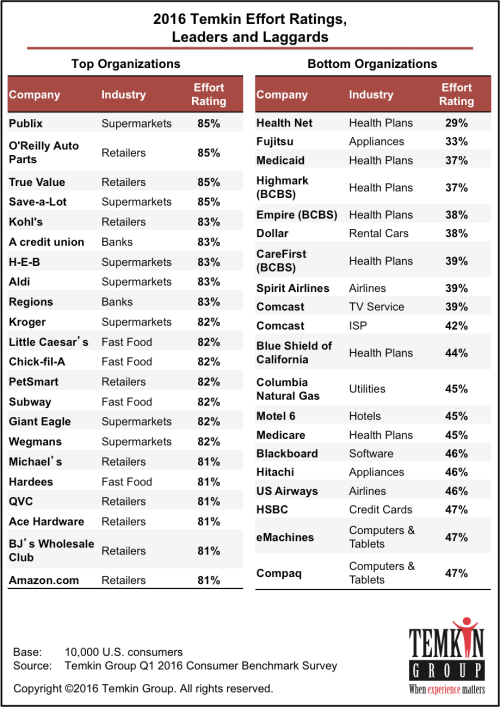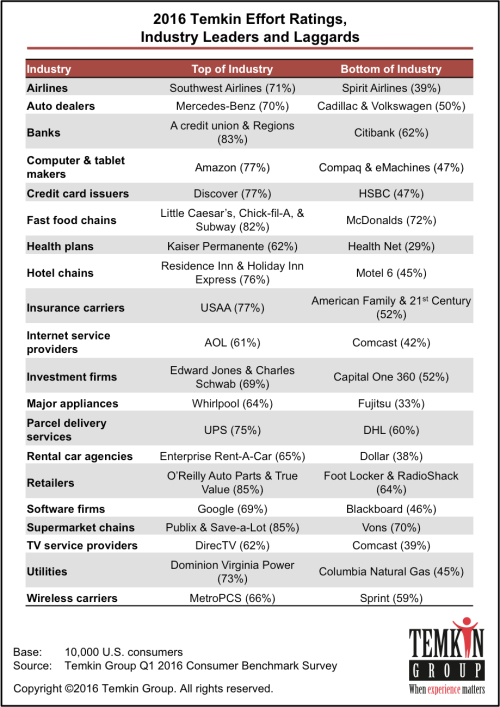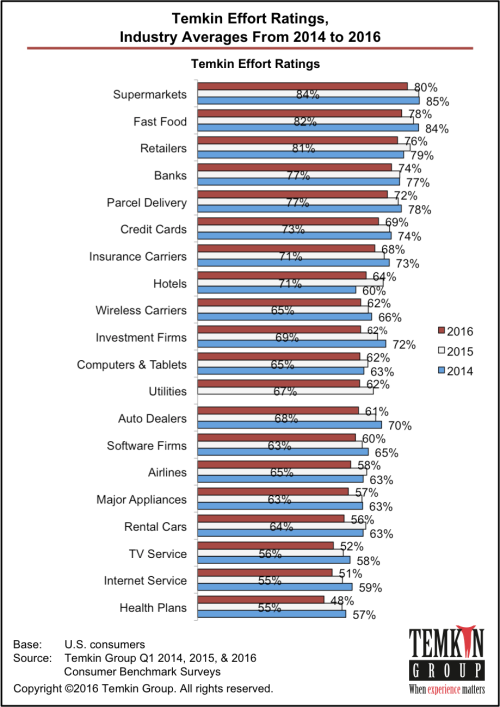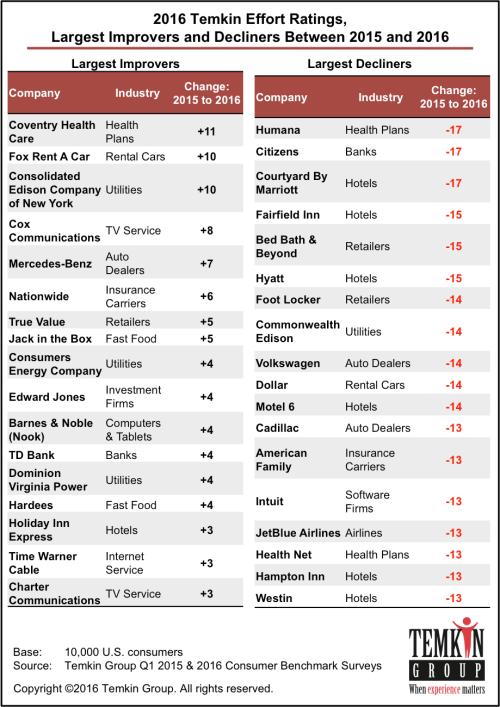2016 Temkin Effort Ratings (Publix, O’Reilly Auto Parts, True Value, and Save-a-Lot Are The Leaders)
September 6, 2016 Leave a comment
For the previous six years, we’ve measured effort as part of the Temkin Experience Ratings. This year, we examined 294 companies across 20 industries based on a survey of 10,000 U.S. consumers (see methodology section below). In this post, I’m showcasing the results from the effort component of those ratings.
Congratulations to Publix, O’Reilly Auto Parts, True Value, Save-a-Lot, Kohl’s, credit unions, H-E-B, Aldi, and Regions Bank for earning the top scores in the 2016 Temkin Effort Ratings. At the other end of the spectrum, Health Net, Fujitsu, Medicaid, Highmark BCBS, Empire BCBS, Dollar Rent A Car, CareFirst, Sprit Airlines, and Comcast earned the lowest ratings.
Do you want to the data from the 2016 Temkin Effort Ratings? It’s included in the Temkin Experience Ratings spreadsheet that you can purchase for $395.
Here’s a sample of the spreadsheet (.xls)
Here are some additional insights from the 2016 Temkin Effort Ratings:
- Supermarkets earned the highest average scores, followed by fast food chains, retailers, banks, and parcel delivery industries which all earned good ratings.
- The health plan industry earned very poor ratings, slightly behind Internet services and TV services.
- Amazon (Kindle), Kaiser Permanente, Southwest Airlines, Residence Inn, and Holiday Inn Express most outpaced their industry averages.
- Fujitsu, HSBC, Spirit Airlines, Motel 6, Health Net, Dollar Rent A Car, and Columbia Natural Gas fell the farthest behind their industry averages.
- The average score for all 20 industries declined between 2015 and 2016. Rental cars dropped the most (8.3 points) and software firms dropped the least 2.6 points). Looking back to 2014, only the hotel industry has increased its effort ratings over the previous two years.
- Coventry Health Care, Fox Rent A Car, Con Edison, Cox Communications, and Mercedes Benz made the largest improvements between 2015 and 2016.
- Humana, Citizens Bank, Courtyard By Marriott, Fairfield Inn, Bed Bath & Beyond, and Hyatt dropped the most between 2015 and 2016.





Purchase Temkin Experience Ratings spreadsheet for $395,
which includes Temkin Effort Ratings
Here’s a sample of the spreadsheet (.xls)
Methodology:
The data was collected from an online survey of 10,000 U.S. consumers during January 2016. Quotas were set to mirror the U.S. census data for age, income, gender, ethnicity, and geographic regions of the U.S. population.
The Temkin Effort Ratings are based on asking consumers the following question about companies with whom they’ve interacted during the previous 60 days: “Thinking back to your most recent interactions with each of these companies, how easy was it to interact with the company?” Potential responses range from 1= “Very difficult” to 7= “Very easy.” Temkin Effort Rating for a company is calculated by taking the percentages of consumers who respond with a 6 or 7 and subtracting the percentage who responded with 1, 2, or 3.

You can view a sortable list of the Temkin Experience Ratings (and other ratings) on the Temkin Ratings website.